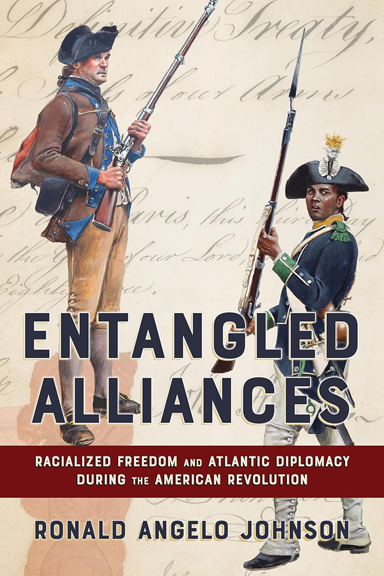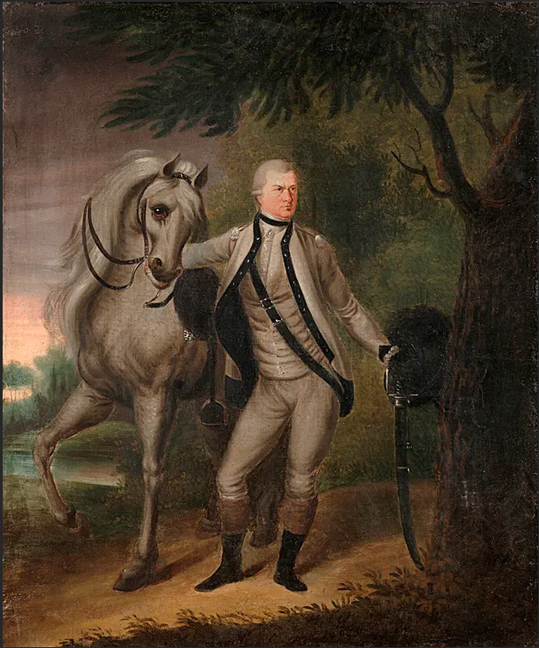George Washington’s Nemesis: The Outrageous Treason and Unfair Court-Martial of Major General Charles Lee during the Revolutionary War by Christian McBurney (El Dorado Hills, CA: Savas Beatie, 2019)
It is interesting that popular culture can effectively present an inaccurate version of history. Paul Revere sent the misleading picture of Capt. Thomas Preston ordering his forces to fire on Boston crowds in front of the Customs House on March 5, 1770. Revere understood the power of that picture and what it would do in the other colonies. In our own time, Linn Manuel-Miranda portrays Gen. Charles Lee as a cowardly, bitter figure in his blockbuster musical Hamilton. The audience ends up believing Lee was incompetent and vain. This image is only partially right, and Washington, D. C. lawyer and historian Christian McBurney’s recent book, George Washington’s Nemesis, expertly attempts to set the record straight regarding Gen. George Washington’s talented but ill-tempered second in command.
General Charles Lee was perhaps the most experienced commander in the Continental Army. He had a great deal of experience as a British officer in several campaigns before he came to the North American colonies. This experience was enough for Washington, newly minted commander of the new rebel army, to make Lee his second. However, Lee’s reputation was never confirmed because he was captured early in the war and spent over a year in captivity. When he was released, he was put back in the field. Unfortunately, he was held accountable for troubling losses suffered at the Battle of Monmouth Courthouse and was later court-martialed for his behavior. McBurney’s book focuses on these two events during Lee’s brief command (the captivity and the court-martial) to both demonstrate that Lee deserves to be viewed as a traitor to the United States, and that Lee was unfairly court-martialed.
McBurney describes the circumstances that led to Lee’s capture in 1777, and it was during his captivity that Lee wrote out plans for the British to win the war. The plans were written out to British general William Howe. Lee made it very clear in his instructions that the Americans were not capable of winning the war and Lee could act in the role of a type of peace negotiator. Was this treason? Does Lee deserve the same notoriety as Benedict Arnold? McBurney devotes the first five chapters of his book to trying to answer that question, relying on his legal expertise to define treason in various circumstances. What is the meaning of treason? How was it defined in 1777, and was there actually a legal country that Lee could commit treason against? Lee was certainly no Benedict Arnold, so McBurney explores the possible motivations for Lee to commit what may very well have been a treasonous act. How was his correspondence with Howe to be viewed? Lee was released from captivity after sixteen months and no one in Congress or the Continental Army ever learned of his actions.
In retrospect, remaining in captivity with the British may have been the better outcome for Charles Lee. Upon his release, Washington put him back in the field in time for the Battle of Monmouth in the summer of 1778. The next seven chapters of George Washington’s Nemesis cover the battle, Lee’s behavior towards Washington, and his court-martial. McBurney offers a detailed synopsis of the major portions of the battle. Miscommunication led generals under Lee’s command to abandon the field, and Washington publicly berated Lee for the action. If calmer egos prevailed, both Washington and Lee could have discussed the problems each encountered during the battle.
The blame for Lee’s retreat should have been placed on Generals Charles Scott and William Maxwell, and McBurney makes that very clear with his research (based on private letters, diaries, court-martial records, etc). Lee’s problems were entirely of his own doing. McBurney does a fine job describing Lee’s personality and his impetuous behavior. Lee was so embarrassed by Washington’s severe dressing down that he could not leave well enough alone. Soon Lee was writing to his commander essentially demanding an apology or at least a court-martial to be publicly exonerated. Washington acquiesced to the latter, and Lee was court-martialed for an unnecessary retreat from the battlefield, disobeying direct orders and disrespecting the commander-in-chief.
McBurney again uses his skills as an attorney to explore all facets of the charges brought against Lee. The sense of courtroom drama is evident throughout. Famous figures such as Richard Henry Lee, Marquis de Lafayette, John Laurens and Alexander Hamilton play important parts in the story. McBurney provides a chapter on Congress’s approval of the verdict in order to explain how Washington got away with disposing of Lee in what can only be characterized as a serious miscarriage of justice.
In refusing to ask the court-martial judges to reconsider the verdicts on the first two charges, it was also not Washington’s finest hour. It was the Revolutionary War’s most scandalous court-martial, and one of the most unfair in American military history (xi).
The final chapter relays some of the difficulties Lee had after his sentence was carried out. He was involved in a duel with John Laurens, and he unsuccessfully tried to save his reputation before he died in disgrace in 1782.
The book is rich with primary and secondary sources, along with portraits of the major players. Maps of the Battle of Monmouth and photographs of the battlefield are helpful in determining how the fight played itself out and why a controversy still exists. McBurney concludes with an appendix describing the four probable locations for Lee’s court-martial.
It was an interesting experience reading the book because one comes away with two vastly different opinions of Charles Lee. He is not the Lee of Hamilton, but at the same time he is not exactly worthy of any sympathy. No one comes out smelling like roses in the end: not Lee, nor Washington, nor Hamilton, nor Laurens. George Washington’s Nemesis is both a history and a legal study. Readers do not need legal training to tackle some of the text, but it would sure be beneficial. And what is most important, McBurney allows for the reader to come up with his/her own opinion of Charles Lee.
PURCHASE THIS BOOK FROM AMAZON IN CLOTH OR KINDLE
(As an Amazon Associate, JAR earns from qualifying purchases. This helps toward providing our content free of charge.)








2 Comments
Thanks for this review. I’ve been debating reading this one for a while, but the adjectives in the title “outrageous” and “unfair” pretty much gave the game away. But, it seems rather than giving us blanket Lee boosterism, McBurney has written an even-handed account of the man’s role as a Continental general. I’ll keep an eye out for it when the bookstores open up again!
Thank you for this thoughtful review. We enjoyed reading it and knew others would appreciate this take on Charles Lee as well. – Savas Beatie